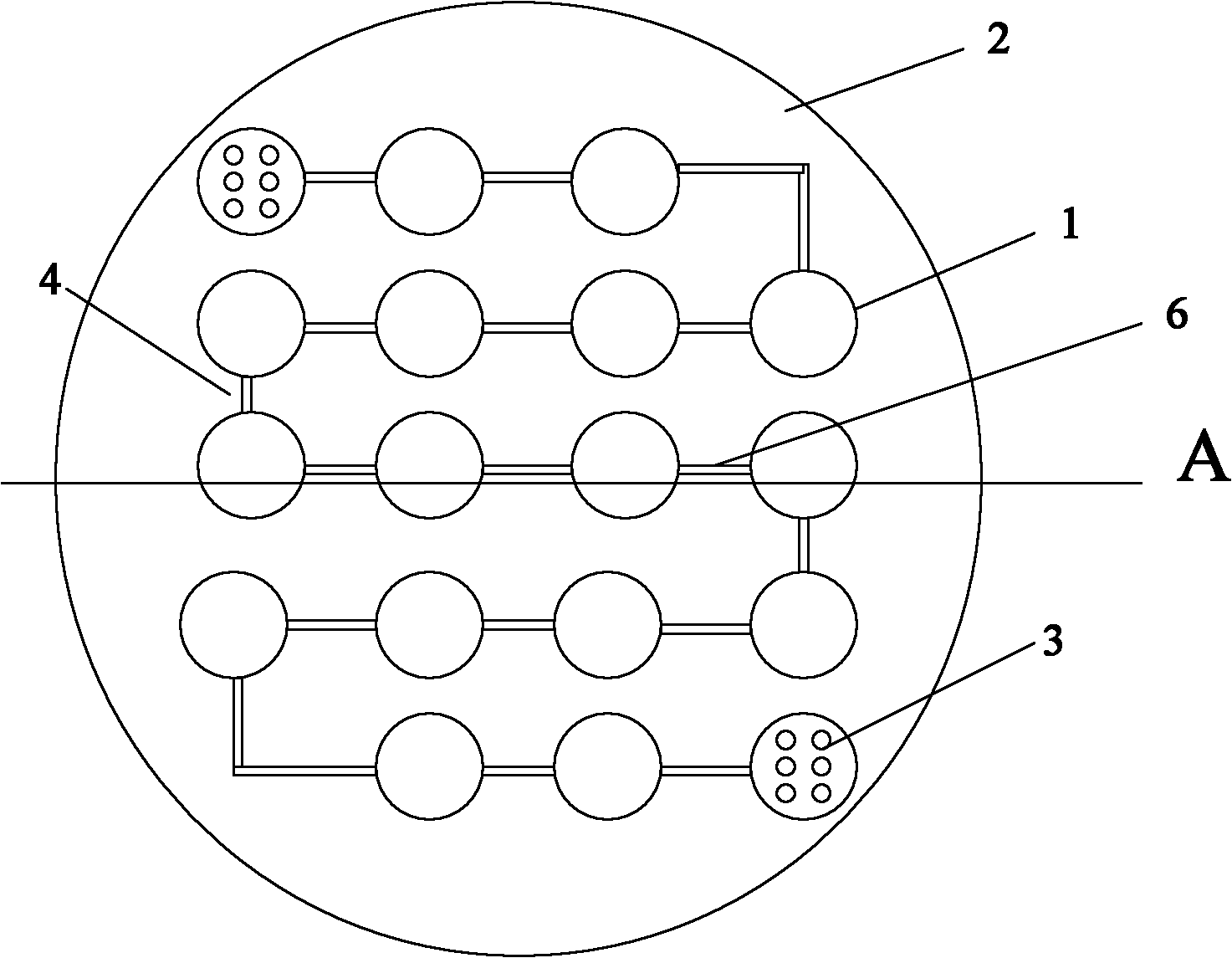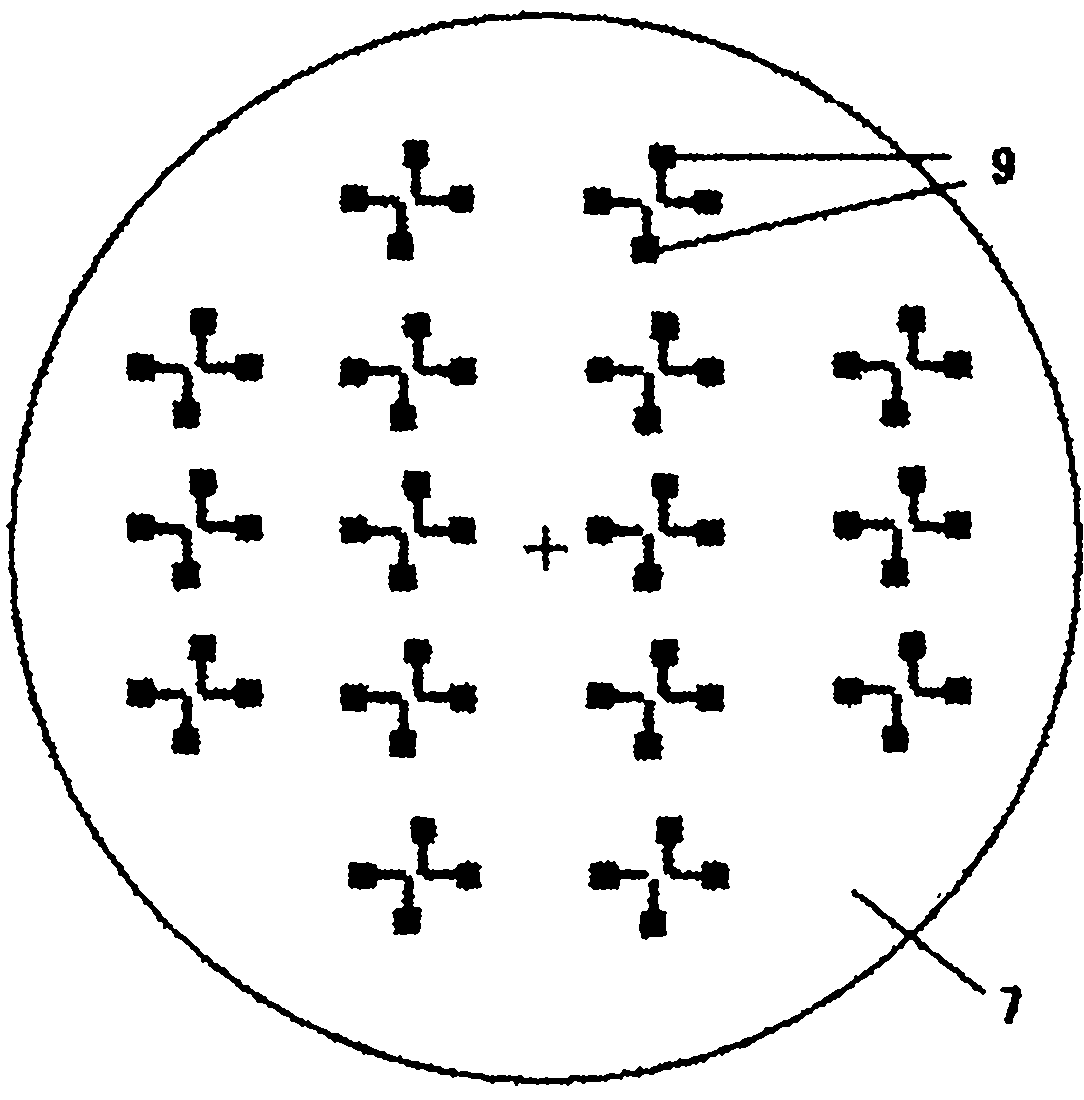Method for packaging wafer level glass micro-cavity of light-emitting diode (LED)
A technology of light-emitting diodes and packaging methods, which is applied in the direction of electrical components, electric solid devices, circuits, etc., can solve the problems of poor moisture resistance of organic matter, poor light transmission of lenses, and low efficiency of phosphor powder, so as to achieve anti-aging and simple process Reliable, high light output effect
- Summary
- Abstract
- Description
- Claims
- Application Information
AI Technical Summary
Problems solved by technology
Method used
Image
Examples
Embodiment 1
[0034] A wafer-level glass microcavity packaging method for light-emitting diodes, comprising the following steps:
[0035] The first step is to etch specific microgrooves and microchannel patterns on Si wafers (such as 4-inch wafers) using Si micromachining technology. The microgrooves are connected to the microchannels, and the microgrooves can be square or circular. The size ratio of pattern, microgroove and microchannel is adjusted according to the preparation requirements, and an appropriate amount of thermal air release agent is placed in the microgroove; in the second step, the above Si wafer with pattern and thermal air release agent is combined with Pyrex7740 borosilicate The glass wafers are anodically bonded in the air or in vacuum to seal the above-mentioned microgrooves and micro-flow channels to form a sealed cavity; the third step is to heat the above-mentioned bonded wafers to 820°C~950°C in the air ℃, and keep it warm for 0.5~10min, the positive pressure forme...
Embodiment 2
[0038] A wafer-level glass microcavity packaging method for light-emitting diodes, comprising the following steps:
[0039] The first step is to use the Si micromachining process to etch the wet pattern corresponding to the packaged LED array on the Si wafer (such as a 4-inch wafer): a micro-groove array (80um in depth), and the micro-grooves are separated by micro-grooves. The flow channels are connected, the microgroove is circular, and an appropriate amount of heat release agent calcium carbonate is placed in the microgroove.
[0040] In the second step, the above-mentioned Si wafer with the pattern and thermal air release agent is anodically bonded to the Pyrex7740 glass wafer in vacuum, so that the Pyrex7740 glass forms a sealed cavity with the above-mentioned microgrooves and micro-channels.
[0041] The third step is to heat the above-bonded wafers to 880°C in the air and keep it warm for 10 minutes. The heat release agent calcium carbonate will generate positive pressu...
Embodiment 3
[0048] A method for manufacturing a wafer-level glass microcavity for LED packaging, comprising the following steps:
[0049] The first step is to oxidize a 5000A oxide layer on a single-sided polished silicon wafer by a combination of dry and wet oxygen, spin-coat AZ P4620 photoresist on the polished surface, expose and develop to remove the photoresist that needs to be etched on the surface of the microgroove. Use Si micromachining technology to etch shallow grooves on Si wafers (such as 4-inch wafers). The silicon wafers used can be silicon wafers with a standard thickness, such as 500 micron thick silicon wafers. The shallow grooves are etched by TMAH wet etching. Etching, heating in a water bath at 90°C for 2 to 2.5 hours, the etching depth is 80 to 120, this depth can be relatively easy to build a thermal release agent, and can provide a certain space between the thermal release agent and the wafer to avoid contact with the glass The contact produces pollution, and the p...
PUM
 Login to View More
Login to View More Abstract
Description
Claims
Application Information
 Login to View More
Login to View More - R&D
- Intellectual Property
- Life Sciences
- Materials
- Tech Scout
- Unparalleled Data Quality
- Higher Quality Content
- 60% Fewer Hallucinations
Browse by: Latest US Patents, China's latest patents, Technical Efficacy Thesaurus, Application Domain, Technology Topic, Popular Technical Reports.
© 2025 PatSnap. All rights reserved.Legal|Privacy policy|Modern Slavery Act Transparency Statement|Sitemap|About US| Contact US: help@patsnap.com



